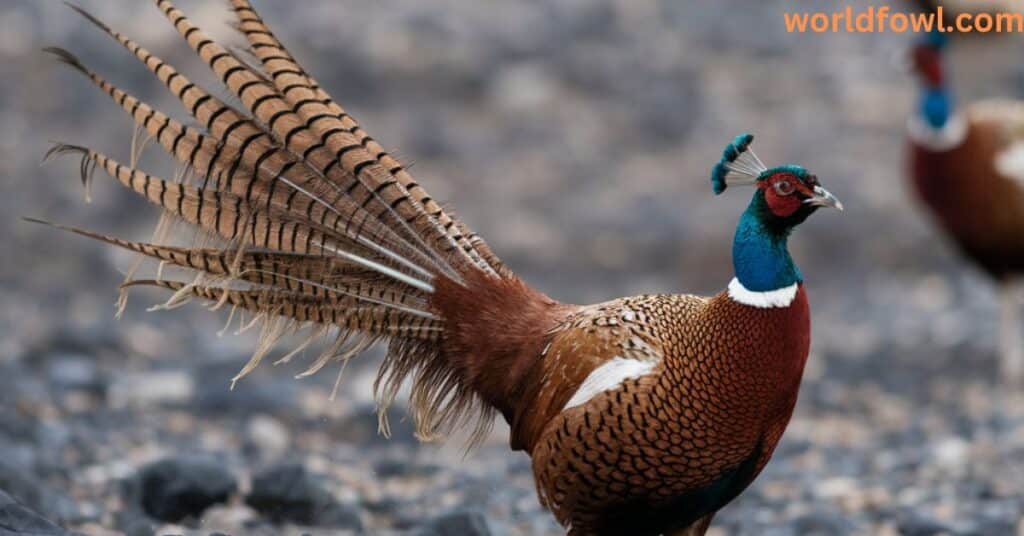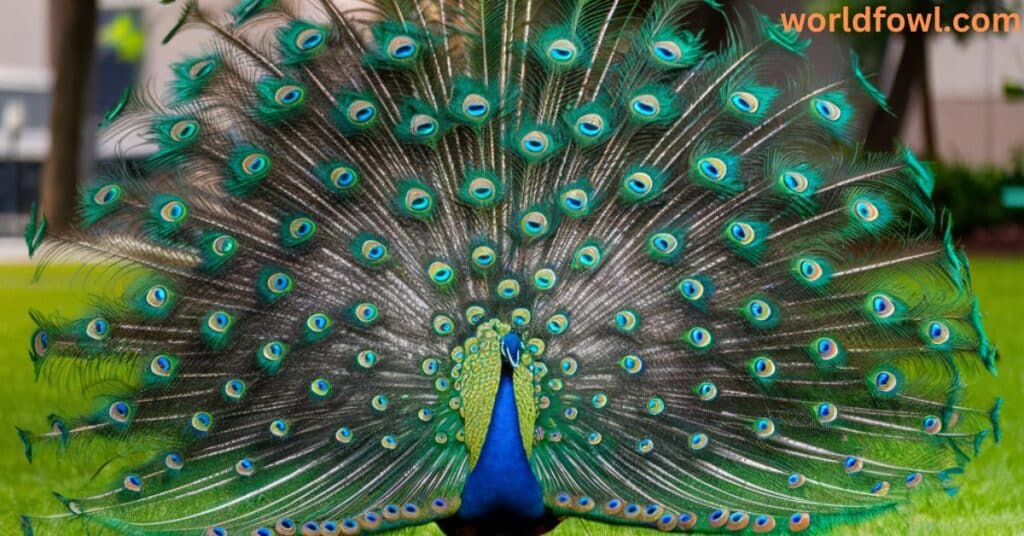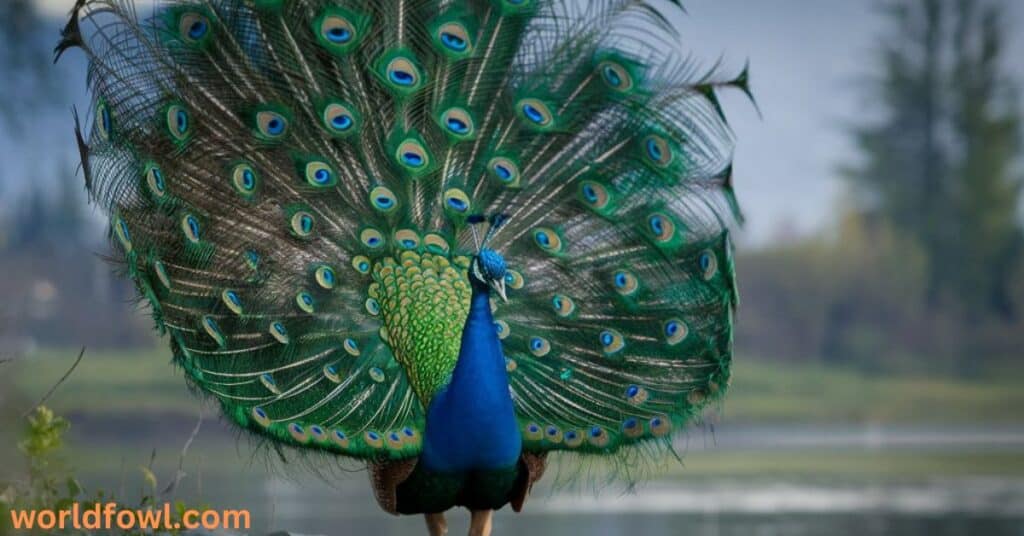Peacocks are creatures that invoke awe and admiration with their extravagant feathers, mesmerizing displays, and captivating calls. When most people think of these birds, images of elegance and grace come to mind, as their colorful plumage and graceful movements have made them an iconic symbol of beauty across cultures. However, beneath this exterior of beauty lies a more complex side to these birds. Do peacocks attack humans? While the majority of peafowl interactions are peaceful, there are circumstances where these birds may become aggressive.
In this in-depth guide, we will explore the dynamics of peacock behavior, including territorial aggression, protective instincts, and the highly aggressive mating season. We’ll also answer questions like how dangerous are peacocks? and how to stay safe when interacting with these magnificent birds. We’ll cover real-world cases, safety tips, and much more to give you a thorough understanding of these majestic creatures. So, let’s dive deep into the world of peacocks and uncover whether these elegant birds are more than just a graceful spectacle.
Who Are Peacocks? Understanding the Species

Before delving into the question of whether peacocks attack humans, it’s important to understand who these birds are and why they behave the way they do. Peacocks, or Indian Peafowl (Pavo cristatus), are native to the Indian subcontinent but have been introduced to other parts of the world, where they are often seen in parks, gardens, and even private estates. The stunning peacock tail feathers, or train, make them one of the most recognized birds worldwide.
Physical Characteristics
- Male vs. Female: The most noticeable difference between male and female peafowl is their appearance. Male peacocks are known for their striking feather displays, with iridescent blue and green plumage that ends in eye-catching spots. In contrast, female peahens are much more subdued in appearance, with brown and grey feathers that help them blend into the environment to avoid predators.
- Size: Male peacocks can be larger than females, especially when their tail feathers are fully extended. A fully grown male peacock can weigh between 8-13 pounds, while females tend to weigh 5-8 pounds.
Habitat and Range
- Native Habitat: Peacocks are native to the dry forests and grasslands of the Indian subcontinent. They thrive in regions with plenty of open space, mixed with areas of dense cover, like forests and hills.
- Adaptation to Human Environments: Peacocks are highly adaptable and have thrived in human-dominated environments. They can be found in zoos, private estates, temples, and even urban areas where they roam freely, often without fear of humans.
Social Behavior
Peafowl are social birds, typically seen in small groups. Male peacocks display their tail feathers in elaborate rituals to attract mates. These birds have a hierarchical social structure, and dominant males often have more access to females. In nature, they are omnivores, feeding on plants, seeds, insects, and small animals. The peacock mating display is one of the most famous behaviors associated with these birds, and it plays a significant role in their courtship rituals.
See Also : Do Sea Lions Attack Humans? Terrifying Tales!
Peacock Aggression: When and Why Does It Happen?

While peafowl are usually docile, there are certain times and conditions that may provoke aggressive behavior. Understanding the triggers for peacock attacks can help us better comprehend why these birds might behave in ways that seem surprising or threatening.
Factors That Trigger Aggression
Aggression in peacocks can occur for a number of reasons. Some of the most common triggers include:
Feeling Threatened or Cornered
Like most animals, peafowl can become aggressive when they feel threatened. If a peacock is surprised by a human or feels trapped in a corner, it may lash out to defend itself. This is especially true if the bird feels there is no escape route or if it is being harassed.
Territorial Aggression
Peacocks, especially males, are highly territorial creatures. When a male feels his territory is encroached upon, whether by another bird or a human, he may exhibit aggression in an attempt to protect his space. This territorial behavior is most prominent during the mating season, when males are eager to secure the best area to attract females.
Protective Behavior
Peafowl are incredibly protective of their young, and protective instincts can trigger aggressive actions. If a peacock perceives a threat to its nest or offspring, it may act defensively and aggressively to safeguard its family. This instinct is heightened during the nesting season, when female peahens are rearing their young.
Mating Season Aggression
The most frequent time when peacock attacks occur is during the mating season, which generally happens during the spring and early summer months. Male peacocks are focused on attracting females and warding off potential rivals. Their territorial aggression peaks during this period as they compete for attention. During this time, males are particularly sensitive to perceived threats, including humans who may unknowingly enter their space. { Do Peacocks Attack Humans }
See Also : Do Hummingbirds Attack Humans? Unexpected Aggressors!
Protective Behavior: Understanding the Defense Mechanism

Peafowl courtship is often seen as a peaceful display of beauty and grace, but the same behaviors used to attract mates can also serve as a warning or defense mechanism. Let’s take a closer look at how peacock behavior changes when they are protecting themselves or their territory.
Display of Feathers
When a peacock feels threatened, one of its first responses is to spread its elaborate tail feathers in a stunning display. This behavior, typically used during courtship, can also serve as a form of intimidation. By making itself appear larger and more intimidating, the peacock hopes to deter any potential threats, including humans, from coming closer.
- Warning Signs: If you see a peacock displaying its feathers, it’s likely a warning to stay away. The bird is trying to assert its dominance and let you know that it feels threatened. { Do Peacocks Attack Humans }
Pecking and Scratching
If a person continues to approach or fails to respect the peacock’s display, the bird may escalate its behavior and attack. Peacock attacks are often characterized by pecking or scratching with their sharp claws. While these injuries are typically not fatal, they can cause significant pain and bruising.
- Beak: A peacock’s beak is strong and sharp, capable of causing deep scratches.
- Claws: Their claws are also powerful, and if they lash out, they can scratch or even gouge a person’s skin.
Defending Their Territory
Male peacocks are particularly aggressive when defending their territory. During the mating season, they will use every tool in their arsenal to fend off rival males. This includes physical attacks, displaying their feathers, and emitting loud vocalizations. While this territorial aggression is essential for reproduction, it can lead to aggressive encounters with humans who unknowingly cross into their space.
Mating Season: The Most Dangerous Time for Human Interaction
Mating season aggression is one of the most significant factors contributing to peacock attacks. During this time, peacocks are more focused on protecting their territory and attracting mates, which can make them highly sensitive to any perceived threats, including human presence.
Peak Aggression Period
- Timing: The mating season typically occurs between late spring and early summer, though the timing can vary depending on the bird’s location and environmental conditions.
- Male Behavior: During this time, male peacocks are at their most aggressive. They are more likely to defend their territory from intruders and will often display their feathers to assert dominance.
Protecting the Nest and Family
Female peahens are also protective during the mating season. After mating, they will create a nest for their eggs and raise their young. If a human or another animal enters this area, the mother may become aggressive to protect her offspring. Though they are less likely to attack than males, peahens may still engage in aggressive behaviors if they feel their young are at risk.
Documented Cases of Peacock Attacks
Though not common, there have been instances where peacocks have attacked humans. These cases are usually the result of the bird feeling threatened or cornered, or during the heightened aggression of the mating season. Here are some documented cases of peacock attacks:
- Case Study 1: In a public park in India, a tourist was attacked by a male peacock during the bird’s mating season. The tourist had ventured too close to the bird’s territory, and the peacock became agitated. The bird pecked at the tourist’s arm, causing deep scratches and bruising. The incident led to increased awareness of peacock behavior in public spaces.
- Case Study 2: A zoo worker in the United States was injured by a peacock while performing routine maintenance. The bird was protecting its nest, and the worker unknowingly crossed into its territory. The peacock attacked the worker, causing minor injuries that required first aid treatment.
See Also : Will Catbirds Attack Humans? A Deep Dive
How Dangerous Are Peacocks?

While peacocks are not typically dangerous to humans, they do have the potential to cause harm when provoked. Understanding how dangerous they can be is important, especially if you live near a population of peafowl or encounter them frequently.
Potential for Harm
Peacock attacks are rarely deadly, but they can cause significant discomfort and injuries. The sharpness of their beak and claws can cause scratches, cuts, and bruises, particularly if the bird is agitated. These injuries are usually not life-threatening but should still be treated carefully.
- Peacock Injuries: Most injuries from peacock attacks are superficial, such as scratches or minor cuts. However, more serious injuries can occur if the bird targets sensitive areas like the eyes or face.
Can They Kill Humans?
It is highly unlikely that a peacock could kill a human. However, they do have the potential to cause severe injuries if they strike the right area. Most incidents are the result of defensive behavior rather than intentional harm, but it’s still important to exercise caution around these birds, especially during the mating season.
Safety Tips: Avoiding Peacock Attacks
If you live near peafowl or frequently encounter them in the wild, there are some safety tips you can follow to avoid conflict and ensure a peaceful interaction.
Recognizing Peacock Warning Signs
- Feathers Raised: If a peacock raises its feathers, it’s a clear sign that it feels threatened. This is a warning to keep your distance.
- Aggressive Vocalizations: Loud calls or screeching are often signs of aggression. If you hear these sounds, move away to avoid provoking the bird.
- Staring: If a peacock starts staring at you intently, it may be preparing to act aggressively. Back away slowly to avoid provoking the bird further.
Peacock Safety Tips
- Do: Move slowly and calmly around peafowl. Sudden movements can trigger aggression.
- Do: Maintain a safe distance from peacocks, especially during the mating season.
- Don’t: Try to feed peafowl or get too close to them, as this can lead to aggressive behavior.
- Don’t: Approach a peacock that is displaying its feathers. This is a sign that the bird feels threatened and is preparing to defend itself.
What to Do if Attacked by a Peacock
If you are attacked by a peacock, it’s important to remain calm and treat any injuries immediately. Clean any scratches or cuts with soap and water and apply ice to reduce swelling. If the injury is severe or involves sensitive areas, such as the eyes, seek medical attention immediately.
See Also : 7 Spiritual Meanings and Symbolism of Dead Rabbit
FAQ: Do Peacocks Attack Humans
Can Peacocks Be Kept as Pets?
Yes, peacocks can be kept as pets, but they require plenty of space and a safe environment. They are not ideal for small yards and may become aggressive if they feel their territory is threatened.
Are Peacocks Dangerous to Other Animals?
Peacocks can be aggressive towards other animals, particularly during the mating season. Small animals, like chickens, may be at risk if they invade the peacock’s territory.
What Should You Do if You Encounter an Aggressive Peacock in the Wild?
If you encounter an aggressive peacock, stay calm and slowly back away. Do not make direct eye contact, as this may provoke the bird further. Give the bird plenty of space to avoid escalation.
Do Peacocks Attack During the Mating Season?
Yes, peacock attacks are more likely during the mating season. Male peafowl become highly territorial and protective during this time, which can lead to aggressive behavior toward humans.
How Can You Prevent Peacock Attacks if You Live Near Them?
If you live near peacocks, avoid feeding them and maintain a safe distance. Do not approach them, especially during the mating season, and be mindful of their behavior.
Conclusion: Do Peacocks Attack Humans?
In conclusion, peacock attacks on humans are rare but possible. Understanding the underlying factors behind peacock behavior—such as territorial aggression, protective instincts, and mating season aggression—can help you avoid dangerous encounters with these birds. While they are not typically harmful, peafowl can become aggressive when they feel threatened or when defending their territory.
By recognizing warning signs and respecting the space of these majestic birds, you can safely enjoy watching them without risking harm. Whether you’re a wildlife enthusiast or a homeowner living near peafowl, keeping these tips in mind will ensure peaceful cohabitation with these extraordinary creatures. { Do Peacocks Attack Humans }

Henry James is a seasoned blogger and a passionate storyteller on “World Fowl.” With years of experience crafting engaging content, he brings a unique blend of expertise and creativity to his writing. Henry specializes in exploring diverse topics with depth and clarity, captivating readers worldwide.







